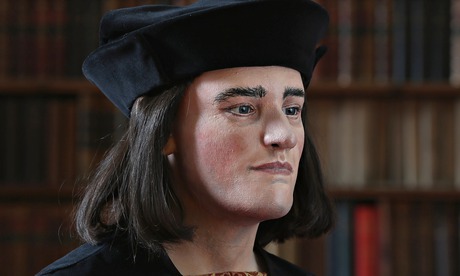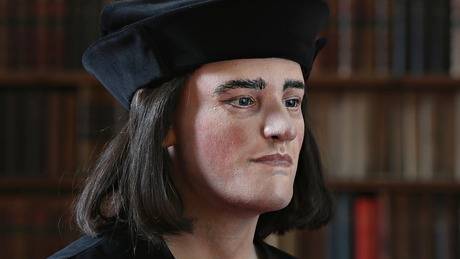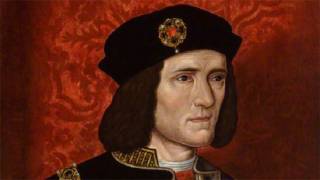Plans revealed to create Richard III genome
Source: theguardian.com

The bones of the king under the car park have more to tell: scientists are to analyse the DNA from the remains of Richard III to create the world’s first complete genome sequence for a named historical figure.
The process could reveal his hair and eye colour, his susceptibility to conditions including Alzheimer’s disease and diabetes, whether he was lactose intolerant, and whether the scoliosis that contorted his spine was genetic. It could also show if any of the surviving portraits, all completed years after his death, are accurate.
The extent to which genes influence character is still a matter for scientific debate, so while the experiment may reveal whether the last Plantagenet king had straight or curly hair, it is unlikely to establish whether Richard was likely to have murdered his way to the throne, his victims including his young nephews, the little princes in the Tower. The tale was a source of scandal in his lifetime and was trumpeted after his death on the battlefield at Bosworth in 1485 by Tudor propagandists including William Shakespeare. "It has been suggested that there is a ’warrior-worrier’ gene, but I am not yet convinced," said geneticist Turi King, who will lead the £100,000 project.
Although genome sequencing has successfully been done on much older bones, including the 5,300-year-old remains of Ötzi the Iceman, and recently a 7,000-year-old tooth which revealed that a hunter gatherer from Spain had blue eyes, King and her colleagues hope to produce the first results from ancient DNA from a named individual whose history is known. It was King who managed to extract DNA from the bones excavated from a scruffy council car park in Leicester, and helped to prove that they were indeed those of the king whose grave had been lost for 500 years. The announcement last February that the team from Leicester University had found Richard "beyond reasonable doubt" made front-page news around the world.
Richard left no descendants but the mitochondrial DNA, passed through the maternal line, proved a perfect match for a Canadian-born, London-based furniture maker, Michael Ibsen, Richard’s 17-times great-nephew through the descendants of his sister Anne of York. King is also going to create a complete genome sequence for Ibsen, to check if any other segments of DNA are still shared across so many centuries.
King will carry out the tests on small samples of bone ground to a powder, in addition to the samples she has already taken. Any residue will be buried with the bones, but where his final resting place will be is still being fought over in the courts, after a group who believe he should be buried in York challenged the original plan to bury him in Leicester Cathedral, 100 yards from the car park where he lay hidden for so long.






















